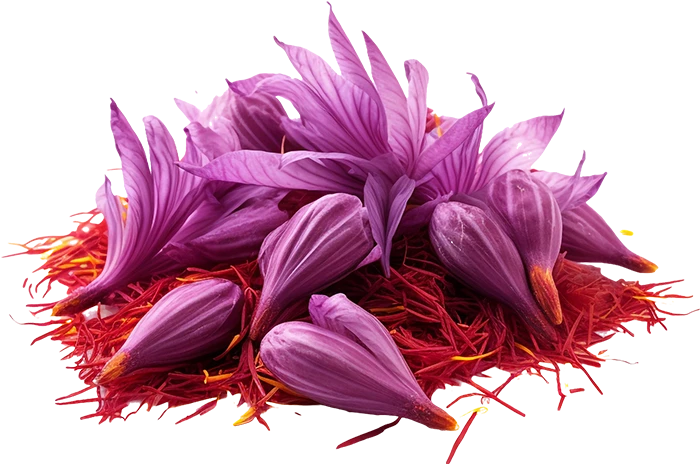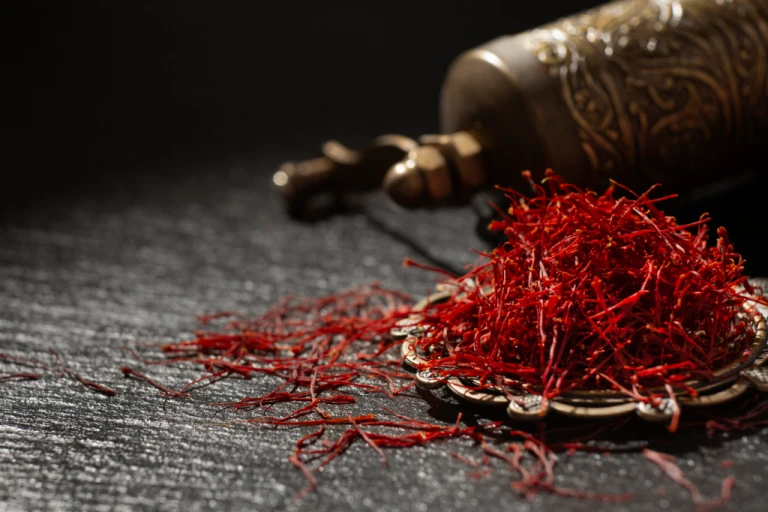 Saffron holds a revered place in the world of spices, valued for its vibrant color, unique aroma, and exquisite flavor that have captivated cultures and cuisines for millennia. Join us on a captivating journey through the history, origins, uses, and cultural significance of saffron.
Saffron holds a revered place in the world of spices, valued for its vibrant color, unique aroma, and exquisite flavor that have captivated cultures and cuisines for millennia. Join us on a captivating journey through the history, origins, uses, and cultural significance of saffron.
Origin and History
Originating from the Mediterranean region and parts of Asia, saffron has been cultivated for over 3,500 years. Ancient civilizations prized saffron for its versatility—it served as a dye for textiles and perfumes, a culinary flavoring, and a component of traditional medicines. The meticulous process of harvesting saffron involves hand-picking delicate stigmas from the crocus flower, a method largely unchanged over centuries, highlighting the dedication of saffron growers.
Origins and Types
Saffron is distinguished by its deep red threads, prized for their floral aroma with hints of honey and hay, and a pungent, slightly bitter taste. Quality is graded based on color intensity, aroma strength, and the absence of yellow styles. The highest grade, "Coupe" or "Mancha," consists solely of red stigmas, offering maximum potency. Other grades like "Sargol" and "Pushal" include varying amounts of yellow styles but are still valued for culinary and medicinal uses.
Culinary and Medicinal Uses
Saffron\'s influence spans cuisines globally, enriching dishes like Spanish paella, Indian biryani, Persian rice, and French bouillabaisse with its distinctive flavor and color. Beyond culinary delights, saffron is reputed in traditional medicine for its potential anti-inflammatory properties, mood-regulating effects, and antioxidant benefits derived from compounds like crocin and safranal. While historical uses include managing anxiety, depression, and menstrual discomfort, ongoing research seeks to uncover its full therapeutic potential.

Cultural Significance
In regions like Iran, Kashmir (India), and Spain, saffron holds deep cultural significance, integral to religious ceremonies, weddings, and festive celebrations. Its golden hue symbolizes prosperity, joy, and purity, making it a cherished gift and a symbol of hospitality. Beyond culinary applications, saffron inspires art, literature, and traditions worldwide, leaving an indelible mark on human creativity.
Sustainability and Challenges
Despite its prestige, saffron faces challenges such as climate change impacts, labor-intensive harvesting, and competition from synthetic alternatives. Sustainable farming practices, technological innovations, and community support are essential to ensure the ethical production and longevity of this prized spice.
Procurement and Storage of Saffron
When purchasing saffron, prioritize authentic sources that guarantee high quality. Store saffron in airtight containers away from light and moisture to preserve its delicate flavor and aroma. Assess quality by examining the thread\'s color intensity, dryness, and brittleness.
Conclusion
Saffron embodies not just culinary prowess but also elegance, excellence, and cultural heritage. From sun-soaked fields where it is cultivated with care to kitchens worldwide, saffron represents human ingenuity and nature\'s bounty. Whether exploring new culinary horizons or embracing holistic wellness, saffron invites us into a timeless journey of taste, aroma, and cultural richness—an enduring symbol of global unity in appreciation for this golden spice.


